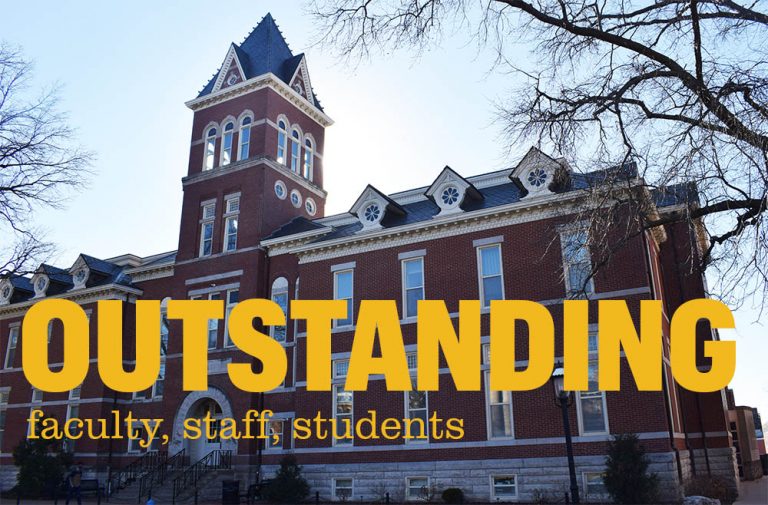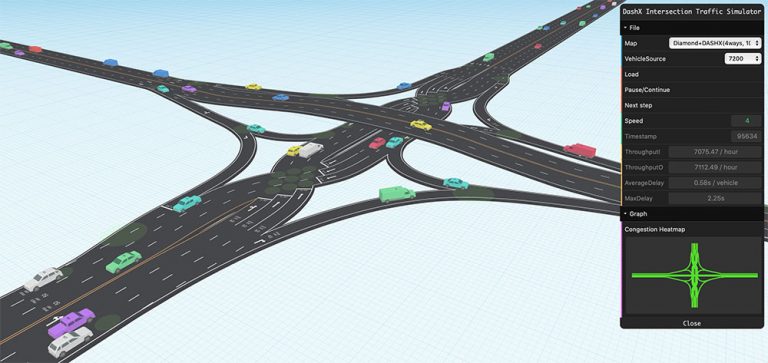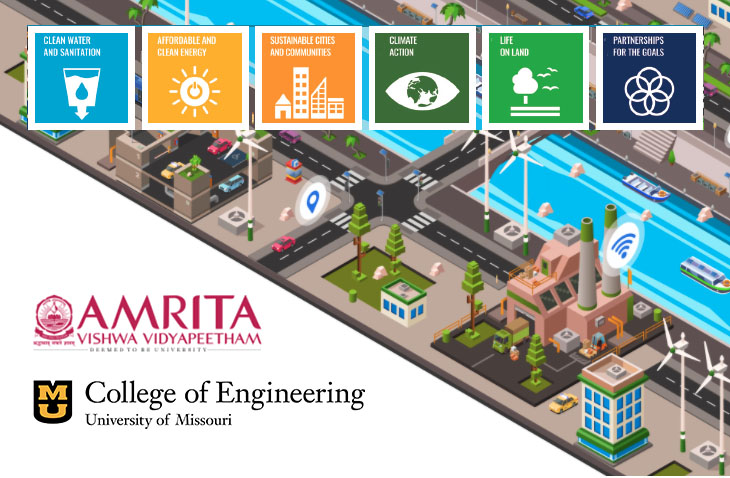
Mizzou Engineering Recognizes Outstanding Faculty, Staff, Students
Mizzou Engineering has recognized faculty, staff and students for outstanding performance and dedication to the College. Winners were surprised today with virtual announcements and personal messages from interim Dean Noah Manring.

No More Red Lights? Proposed System for Self-Driving Cars Eliminates Need to Stop
Imagine getting through your evening commute safely and seamlessly without ever having to wait at a red light or stop sign. That’s what one research team at Mizzou Engineering is studying in anticipation of roadways filled with self-driving cars.

Partnership with Amrita Kicks off with International Symposium
Mizzou Engineering has formed a partnership with a top-ranked university in India to foster collaboration among researchers and students. The partnership between Mizzou and Amrita Vishwa Vidyapeetham aims to promote cooperation through joint research and publications, international initiatives, training programs and student exchanges.

Computer Science Student Takes First at IEEE Competition
Chenxi Zhao, a Mizzou Engineering graduate student, took first place in his category at an IEEE competition held virtually this past weekend. The IEEE St. Louis student presentations competition is under the umbrella of the Institute of Electrical and Electronics Engineers, the largest technical professional organization in the world.

Mapping the Cities of the World One Building at a Time from Space
A group of four computer science PhD students in the Computational Imaging and VisAnalysis Lab at Mizzou Engineering took the top spot in the graduate student category at the 24th Conference on Neural and Information Processing Systems SpaceNet 7 competition.

Five Mizzou Engineers Among Mizzou 18, Mizzou ’39 Recipients
Five engineers were among the MU students honored last week with Mizzou 18 and Mizzou ’39 Awards.

Meet Shubhra Gangopadhyay
Sometimes, before you can think big, you have to think small. After all, you can’t tackle the big problems without interacting with the microscopic molecules, electrons and atoms that make up our world. Meet Shubhra Gangopadhyay, professor, researcher and inventor of teeny-tiny technologies.

Keller Serving as President-Elect of IEEE’s Computational Intelligence Society (CIS)
A Mizzou Engineering faculty member is now serving as president-elect of the Computational Intelligence Society (CIS) under the umbrella of the Institute of Electrical and Electronics Engineers (IEEE).

Mizzou Cybersecurity Center Forms New Industrial Advisory Board
Mizzou Cybersecurity Center directors have assembled an all-star team of industry professionals to guide the future of research and education around cybersecurity strategies. The new Mizzou Cybersecurity Industrial Advisory Board (IAB) will help plan center activities, provide input into research and educational curricula and consider potential strategic partnerships between the center and their respective organizations.

Mizzou Engineer Among Top Data Leaders of 2021
A Mizzou Engineer is one of the top academic data leaders in the world, according to Chief Data Officer (CDO) Magazine. The magazine named Assistant Professor Grant Scott to its inaugural list of “Leading Academic Data Leaders” for 2021.